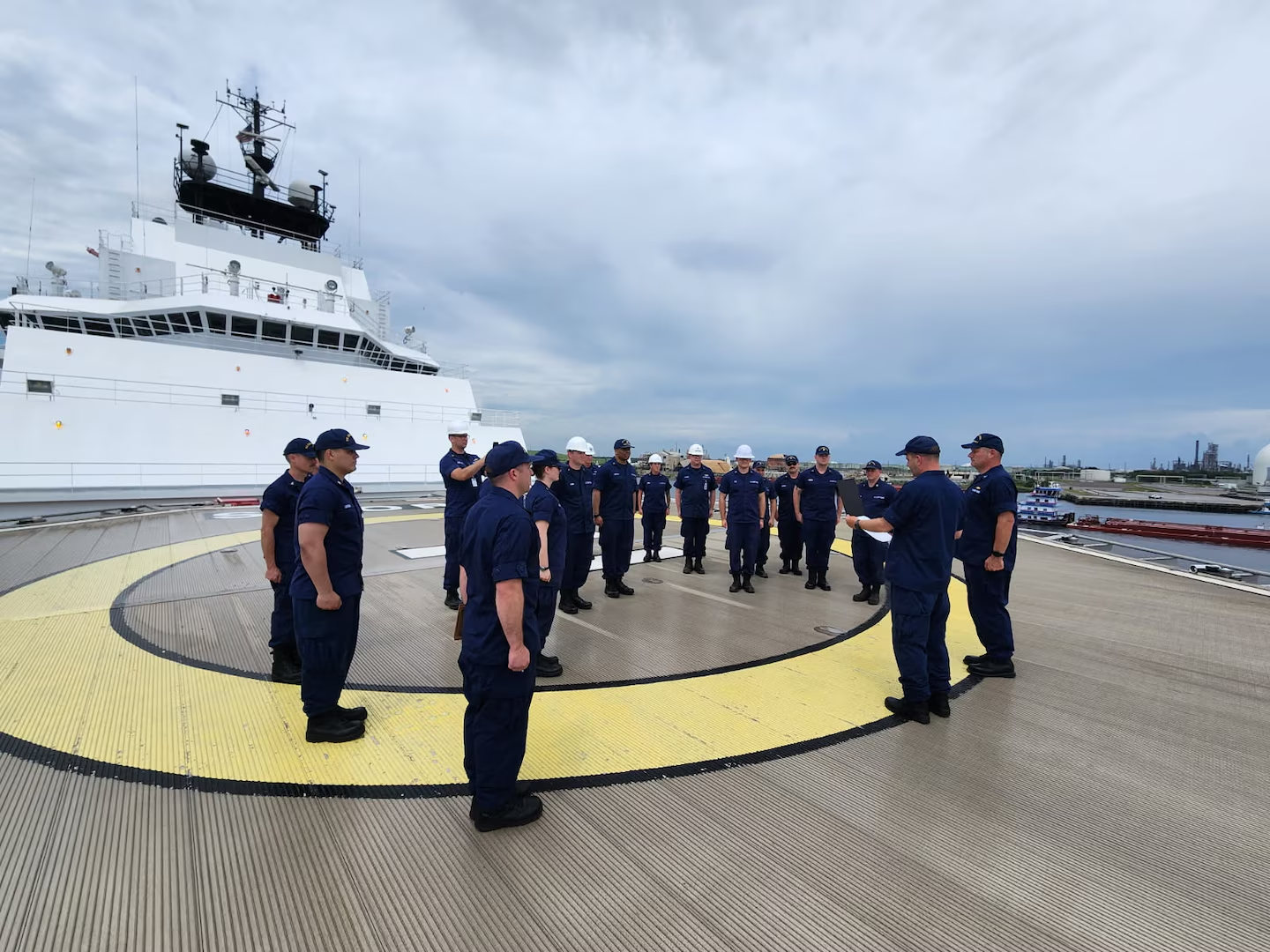The U.S. Coast Guard cutter Storis (WAGB 21) has departed on its first operational deployment. The cutter is the agency’s first polar icebreaker acquired in more than 25 years.
The vessel will support Coast Guard missions in the Arctic and provide an interim capability while the service awaits delivery of the new Polar Security Cutter (PSC) class. The first PSC, originally scheduled for delivery in the mid 2020s, is now expected in 2030 at the earliest.
The ship was formerly the motor vessel Aiviq, purchased on Dec. 20, 2024, from a subsidiary of Edison Chouest Offshore. Following its acquisition, the vessel underwent modifications to improve communications systems and self-defense capabilities. The Coast Guard renamed the 360’8”x80’x34’ polar class 3-equivalent icebreaker Storis, making it the second vessel in Coast Guard history to carry that name.
Prior to the acquisition, Aiviq was an anchor handling supply tug with icebreaking capability. It was built at Edison Chouest's North American Shipbuilding, Larose, La., and LaShip, Houma, La., and delivered in March 2012 to support Shell’s oil drilling operations in the Beaufort and Chukchi Seas off the coast of Alaska.
The cutter is commanded by Capt. Keith M. Ropella, who serves as chief of cutter forces at Coast Guard headquarters in Washington, D.C. Ropella previously commanded Coast Guard cutter Polar Star (WAGB 10) from July 2022 to July 2024.
The vessel will be commissioned in August in Juneau, Alaska, which is planned as its permanent homeport. Until shore infrastructure upgrades are completed in Juneau, the cutter will be temporarily berthed in Seattle, alongside the Coast Guard’s two other polar icebreakers.
A Coast Guard press release noted the Storis acquisition was funded through the Don Young Coast Guard Authorization Act of 2022 and the fiscal year 2024 appropriations. The agency said the purchase does not alter the Coast Guard’s ongoing procurement of the PSC fleet and is not part of that program. The service will continue to assess the Storis’s condition and requirements to determine when the cutter will reach full operational capability.



The Coast Guard said its current fleet operates three polar icebreakers, 21 domestic icebreaking vessels, and 16 ice-capable buoy tenders. Prior to the Storis, the Coast Guard operated just two polar-capable icebreakers: the 24-year-old medium icebreaker USCGC Healy (WAGB-20) and the 48-year-old heavy icebreaker USCGC Polar Star (WAGB-10). Polar Star’s sister vessel, USCGC Polar Sea (WAGB-11), has been inactive since 2010 due to repeated mechanical failures and has been serving as a parts donor.
According to service planning documents, the Coast Guard requires a fleet of eight to nine polar icebreakers to meet national objectives in the polar regions. The Storis will serve as a bridging asset until the PSC program is fully delivered.
The Coast Guard said that the deployment of the Storis aligns with Force Design 2028 (FD2028), the Coast Guard’s strategic framework announced by Secretary of Homeland Security Kristi Noem on May 21. FD2028 includes initiatives to develop force structure, streamline acquisitions, and modernize capabilities.
The Coast Guard stated, “We will reform Coast Guard acquisitions to rapidly deploy capabilities to execute our missions.” Other components of FD2028 include establishing a Deployable Specialized Forces command and eliminating obsolete programs to enhance effectiveness, the agency said.




